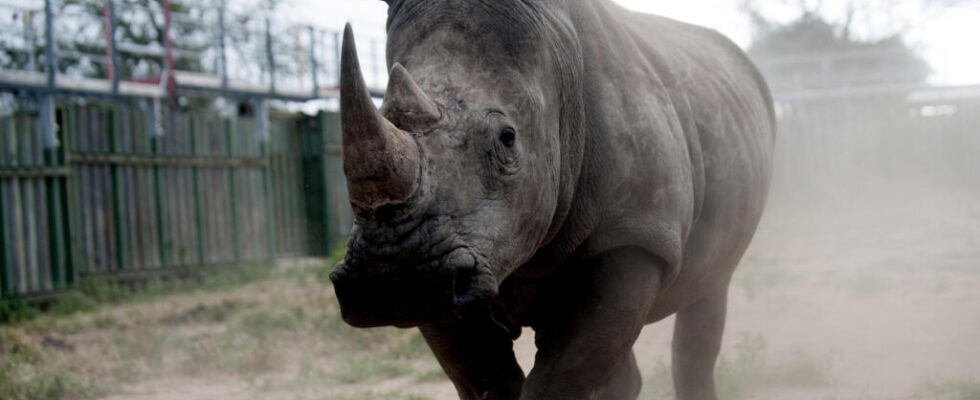Illegal hunting of the mammal fell by almost half in May and June 2024 compared to the same period a year earlier, in a park in Kwazulu-Natal, according to figures released Wednesday, August 1 by the South African Department of the Environment. A success attributed to dehorning, a method which, however, has its limits.
3 min
Cutting off rhino horns to cut the grass under poachers’ feet. The method may come as a surprise, but it tends to confirm its effectiveness for the survival of this population of threatened mammals in its vast sanctuary in southern Africa. Four of the five species of rhinoceros (three in Asia, two in Africa) are vulnerable or critically endangered, according to the WWF.
In South Africa, 229 rhinos were illegally killed in the first six months of 2024, compared to 231 in the same period last year, the Ministry of the Environment counted. A stable figure, but the drop is much more drastic in the months of May and June: 43 mammals killed, compared to 76 last year.
“ The poaching area was originally located in the Kruger National Park, which then decided to undertake the dehorning of its rhino population. “, explains Jo Shaw, director of the NGO Save the Rhino. The poachers have therefore moved to another park, Hluhluwe Imfolozi, in the province of Kwazulu-Natal, which has in turn been badly affected by mafia activity. In April, the park undertook its first preventive dehorning operation on more than 1,000 rhinos. ” It is very clear that this drop in rhino poaching is directly linked to the preventive dehorning measures. “, confirms Jo Shaw, echoing the conclusions of the South African authorities.
The method is not new, it has been used for several years in several countries in southern Africa (Namibia, Zimbabwe) and increasingly often in South Africa, ” always successfully “, according to the specialist. It consists of sawing off the horns of rhinoceroses to remove any interest in them in the eyes of criminals, who covet them to fuel a lucrative trade, and do not bother to leave them alive. ” The technique is now perfected and carries little risk for the animal. “, anesthetized beforehand. The horn is cut at a specific location, like a human nail. ” This is an extreme measure that we would obviously prefer to avoid. ” admits Jo Shaw.
A proven technique, a short-term solution
Furthermore, it has also tested its limits. The operations require a helicopter to approach the animal in order to immobilize it and are therefore expensive. Then, the rhinoceros’ horns grow back quickly, the operation would have to be repeated every two years. Finally, dehorning would have an impact on the animal’s social behavior, according to a recent study published in NatureShe would tend to feel more vulnerable, to isolate herself even more and therefore to reduce her social interactions and her chances of reproduction.
” This is not a long term solution, still recognizes Jo Shaw. But it allows heavily poached areas to breathe a little and rangers to adapt their conservation strategy. It contributes to the survival of the species, which can live even without horns, and reproduce. »
However, the strategy alone will not be enough, warns the specialist. Firstly because the criminals are moving their hunting area. Secondly because it is an entire transnational mafia network that would have to be dismantled. It is necessary to protect the parks where rhinos live, but it is also necessary to investigate the trafficking networks, from the source country to the consumer countries. To do this, customs must work together across the entire trafficking chain to tackle this problem in its entirety. “The NGO, like the South African government, therefore insists on the need to strengthen international cooperation, in particular with the countries of South-East Asia, the destination markets for this traffic.
► Learn more: Rhino dehorning, the solution to poaching?
